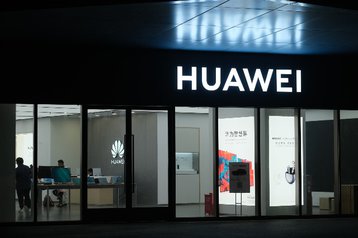US regional wireless carrier SI Wireless said it fears for its future, amid the rip-and-replace of Chinese vendor Huawei’s equipment from its network.
The company, which has previously voiced its concerns about the program, slammed the Federal Communications Commission (FCC) for its lack of urgency around reimbursing companies that have had to replace banned Chinese telecommunications equipment.
SI Wireless President Leslie Williams told DCD that the company has been unable to operate since beginning the rip-and-replace program operated by the FCC.
Established in 2009, SI Wireless served rural customers across Tennessee and Kentucky with mobile, voice, and 4G data services across 204 sites.
The company, which served around 30,000 subscribers, relied heavily on roaming revenue from the big carriers, which didn't have a presence across those areas.
“The current situation with the Fund Administrator is deeply concerning for SI Wireless and threatens the viability of our business,” said Williams.
“It's evident that the Fund Administrator is retaliating against us for our candid discussions about the program. Each invoice we submit faces significant delays, with some remaining unanswered for over a year now.”
Williams said that the FCC has been slow to respond to invoices for payments, including some that are more than 560 days old.
Providing an update, Williams claims that SI Wireless is still waiting for nearly $110 million in addition to the 39.5 percent allocated funding of $71.6 million.
"We've been engaged in this program for two years now, during which we've received just over $24 million, roughly 13 percent of the total $181 million needed to complete the rip-and-replace project for our entire network," he explained.
"It's worth noting that the ongoing back-and-forth on these invoices pertains to 39.5 percent of the funds required for the project, which was originally slated for completion within a year. As of now, SI Wireless still has over $47 million of its allocation unpaid, representing 66 percent of the total allocation after two years in the program. Of this amount, invoices totaling $12.5 million have already been submitted, while the remaining $34.6 million is pending approval for modifications before submission."
The program has come under heavy scrutiny in recent months. In January, the FCC revealed that only five companies have completed the removal of banned Chinese telecom equipment.
FCC has pushed Congress on the matter
Earlier this month, FCC Chairwoman Jessica Rosenworcel urged Congress to free up more than $3 billion in additional funding to help fund US carrier's replacement of Huawei and ZTE from their networks.
“This program secures our communications networks by supporting the removal, replacement, and disposal of communications equipment and services produced or provided by Huawei Technologies Company or ZTE Corporation. The successful implementation of the Reimbursement Program is one of the Commission’s top priorities,” said Rosenworcel. “I am writing … to emphasize again the urgent need for full funding of the Reimbursement Program."
Rosenworcel notes that if the program is unable to be completed as planned, then the risk to national security is more likely due to insecure equipment and services in US networks.
According to the FCC, close to 40 percent of the participants in the program say they can't complete the necessary work without additional funding. SI Wireless is included in this category.
"Several recipients have informed the Commission that the funding shortfall could result in the shutdown of their networks or a need to withdraw from the program. Because program recipients serve many rural and remote areas of the country where they may be the only mobile broadband service provider, a shutdown of all or part of their networks could eliminate the only provider in some regions," the FCC said recently.
It stems back to 2019, when Congress passed the Secure and Trusted Communications Networks Act, which authorized the FCC to reimburse certain telecommunications providers for the removal of Huawei and ZTE Corp.
To support the removal of this equipment, the FCC agreed to provide up to $1.9 billion for communications providers that have 10 million or fewer subscribers.
However, funding applications hit $4.98 billion, creating a $3.08 billion shortfall.
Since July 2022, the FCC has received more than 20,000 reimbursement claims across 122 of the 126 applications that have been approved for funding.
DCD has contacted the FCC for further comment.
Sold short by the FCC
Williams has called the program frustrating.
"When the rip-and-replace project first came about, we thought to ourselves, this is going to be great. We're going to be able to get rid of this banned equipment, we're going to be able to do our patriotic duty, and although our network is going to take a hit, we're going to be part of this program and we're going to be able to do something patriotic," he said.
"We were happy to be able to heed the call that our government said we needed to do, which was to remove the Chinese equipment."
He told DCD that the company had no issues with any of the Chinese equipment it had been using.
"We didn't have any issues with the Chinese equipment. I've heard this across everybody who's in this program... but now we've ripped it out. And we're not getting reimbursed to rebuild the network that we had."
The FCC noted in its letter to Congress that it has only been able to allocate funding to applicants with two million or fewer customers.
Even then, however, the regulator stated that these applicants "will receive prorated support of only 39.5 percent of reasonable costs," meaning they are still not being provided the full amount.
Discussing the financial implications the program has had on SI Wireless, Williams said the company has had to take out loans to keep afloat.
"The loans that we got aren't even covered by the program because the loans were taken out after the program started. We wouldn't need the loans if they [FCC] were reimbursing the funds."
Williams adds that customers in rural areas are missing out when companies such as SI Wireless are unable to operate.
"Similar to numerous rural carriers, the majority of our funding didn't originate from our customer base's subscriber payments. Instead, our revenue primarily stemmed from major carriers roaming on our network," he said.
"While some may doubt the importance of this for just tens of thousands of rural customers, the reality is that when a rural carrier like ours, along with many others, goes offline, it leads to a loss of coverage in the areas we used to serve. This is because larger carriers depended on our networks for roaming. Consequently, there's a void in cellular and data coverage, often leading to a deficit in emergency services. This issue isn't solely crucial for us or our customers; it's vital for maintaining connectivity across all of America, not just in urban centers."
Last year, the Rural Wireless Association (RWA) wrote to the FCC to gain more funding for rural carriers currently replacing Huawei and ZTE equipment.
Carriers in other markets have also carried out a similar rip-and-replace program, notably in the UK, where Vodafone and BT have been fighting against the clock to remove Huawei equipment from within their respective 5G networks.
BT missed its December 31, 2023, deadline for removing Huawei equipment from its network core.







